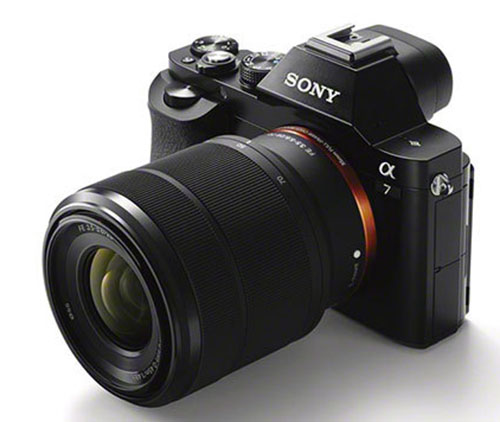Wigwam Jones
Caesar non supra grammati
I hoped that this day would one day come along!
The Sony A7 and A7r are about to be released, and they are FULL FRAME (relative to 35mm film) mirrorless cameras with an OLED integrated viewfinder and focus-peaking for manual focus.
That checks everything on my list for a digital camera body that can take an adapter and finally, my beloved Canon FL lenses. I am so glad I kept them over the years! I am going to be selling off a lot of camera gear so that I can buy one of these (not cheap) camera bodies!
http://www.theverge.com/2013/10/14/4836792/sony-a7-a7r-full-frame-cameras-leak-photos

For me, this is huge. This will be the first full-frame digital camera that offers a digital eye-level viewfinder (not the LCD on the back), the ability to manually focus, and the ability to mount my Canon FD/FL lenses with an adapter and NOT require an image-degrading glass element between the lens and the sensor, nor have a crop-factor that turns a 50mm lens into a 75mm or a 100mm lens.
It's not going to be cheap. I will have to sell off a lot of my remaining stock of collectible cameras, but I don't care. It can all go away now. This is what I want (pending more information from Sony on the actual camera).
Happy days!
The Sony A7 and A7r are about to be released, and they are FULL FRAME (relative to 35mm film) mirrorless cameras with an OLED integrated viewfinder and focus-peaking for manual focus.
That checks everything on my list for a digital camera body that can take an adapter and finally, my beloved Canon FL lenses. I am so glad I kept them over the years! I am going to be selling off a lot of camera gear so that I can buy one of these (not cheap) camera bodies!
http://www.theverge.com/2013/10/14/4836792/sony-a7-a7r-full-frame-cameras-leak-photos

For me, this is huge. This will be the first full-frame digital camera that offers a digital eye-level viewfinder (not the LCD on the back), the ability to manually focus, and the ability to mount my Canon FD/FL lenses with an adapter and NOT require an image-degrading glass element between the lens and the sensor, nor have a crop-factor that turns a 50mm lens into a 75mm or a 100mm lens.
It's not going to be cheap. I will have to sell off a lot of my remaining stock of collectible cameras, but I don't care. It can all go away now. This is what I want (pending more information from Sony on the actual camera).
Happy days!


